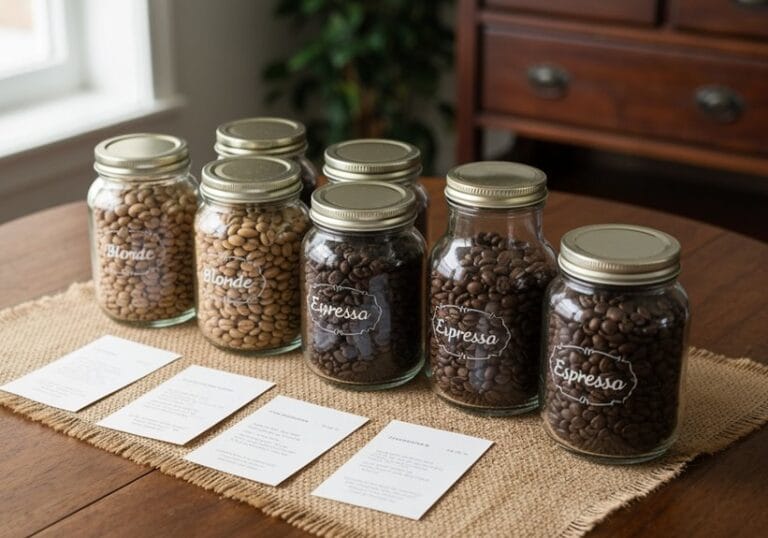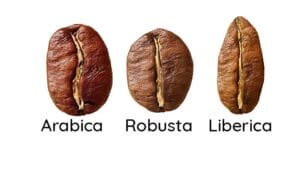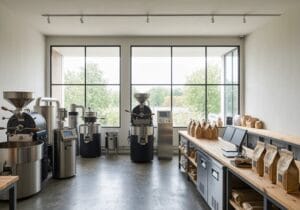Coffee roast levels mean how much those little beans have been roasted—kind of like the difference between a sunny day and a blazing sun! Light roasts are all about fruity flavors and high acidity, perfect for a zesty kick. Medium ones balance acidity and sweetness, like a sweet ride on a rollercoaster. Meanwhile, dark roasts? Well, they’re bold, bitter, and smoky, almost like camping over a fire! Want to reveal more coffee secrets? Stick around!
Key Takeaways
- Coffee roast levels include light, medium, and dark roasts, each with distinct flavor profiles and characteristics.
- Light roasts are light brown, high in acidity, and highlight fruity, origin flavors.
- Medium roasts balance acidity and sweetness, offering a more subtle flavor experience.
- Dark roasts are rich and bold, featuring oily beans, low acidity, and smoky bitterness.
- The roast level influences caffeine content, with lighter roasts generally having higher caffeine than darker ones.
Understanding Coffee Roast Levels
It’s like choosing between a bright, zesty friend (that’s your light roast) who just loves to flaunt their unique flavors, and a bold, moody buddy (enter dark roast flavors) who’s all about that deep, rich intensity.
Light roasts are those lively characters—light brown, no oil, rocking hefty acidity and fruity vibes! They’re roasted at lower temps, aiming to showcase the bean’s origin flavors. This method allows them to preserve the unique characteristics that evoke their original sources!
Light roasts burst with brightness—no oil, light brown, and a fruity flair that tells the bean’s origin story!
Meanwhile, dark roasts—those oily, nearly black beans—work to smother the origin and bring in smoky bitterness.
It’s a flavor showdown but hey, can we all just get along? Coffee lovers unite!
The Importance of Standardization
While diving headfirst into the world of coffee roast levels may seem as straightforward as picking a favorite flavor of ice cream, the truth is—whoo boy—it’s trickier than a cat on a hot tin roof! Standardization in coffee roast terminology is essential. Without it, producers and consumers alike face a dizzying maze of confusion! Just imagine trying to order a “lightly roasted” coffee only to be served a dark elixir that could wake the dead!
| Key Aspect | Importance |
|---|---|
| Standard Terminology | Reduces confusion, enhancing consumer clarity |
| Industry Collaboration | Promotes uniformity in roast levels |
With research backing universal standards, the coffee world can ultimately brew up some much-needed transparency! Furthermore, understanding various flavor profiles can aid consumers in making informed choices based on their taste preferences. Additionally, the concept of pest and disease resistance can influence the development of coffee varieties suitable for different roasting profiles.
Common Roast Level Categories
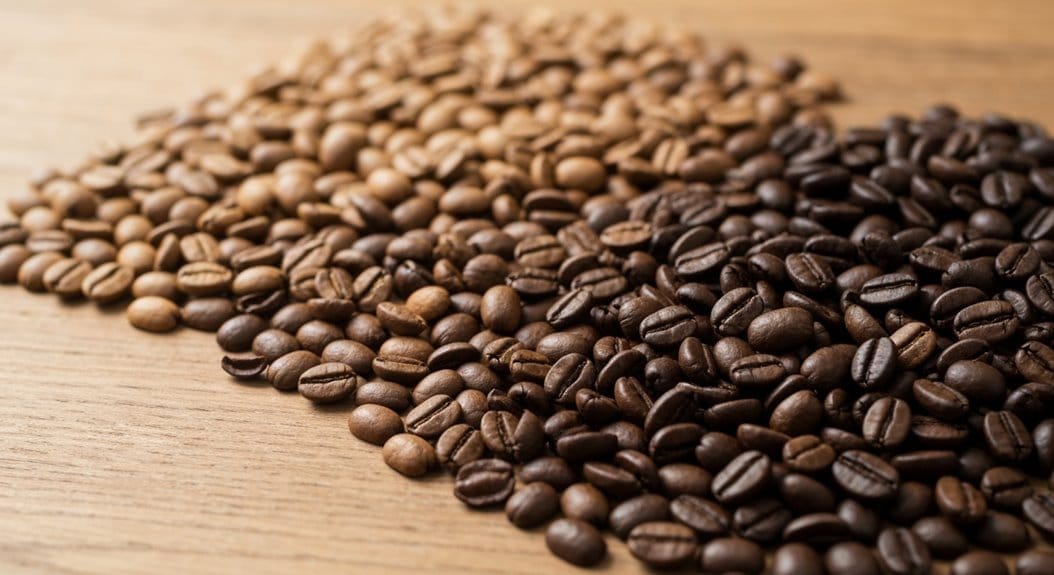
Coffee roast levels are like the secret handshake of the coffee world, a fanciful dance of color, aroma, and flavor that can leave the uninitiated scratching their heads in confusion!
The three main categories are light, medium, and dark roasts, each boasting its own flair. Light roasts, for instance, stay bright and fruity—great for those sipping their pour-overs and boasting about their sophisticated taste.
Medium roasts balance acidity and sweetness like an expert tightrope walker, while dark roasts, oh boy, they come in hot with smoky, robust flavors that could make you forget the original bean!
And don’t get me started on those sneaky subcategories—those roasting techniques can bring so much flavor complexity you might just get a caffeine-induced existential crisis!
Impact on Flavor and Brewing
Understanding how roast levels impact flavor and brewing can feel as tricky as solving a Rubik’s Cube blindfolded! The interplay of acidity balance and flavor extraction can be mind-boggling. Think of it this way: light roasts have high acidity, delivering a zesty kick—imagine sipping on a tangy lemonade! Meanwhile, dark roasts mellow out with low acidity, offering bold, rich flavors, like a cozy campfire. Blonde roast coffee retains more moisture compared to darker roasts, contributing to increased caffeine content and a unique flavor profile.
Here’s a quick view of the roast levels:
| Roast Level | Acidity & Flavor Characteristics |
|---|---|
| Light | High acidity, bright, fruity flavors |
| Medium | Moderate acidity, balanced sweetness |
| Dark | Low acidity, bold, rich notes |
| Extra Dark | Very low acidity, smoky, bitter flavors |
| Cold Brew Impact | Changes flavor profile, adds smoothness |
Additionally, the roast level directly impacts acidity, bitterness, sweetness and overall flavor intensity. Mixing brew temperature can also twist those flavors—now you’ve got a whole coffee adventure!
Key Research Insights on Roast Levels
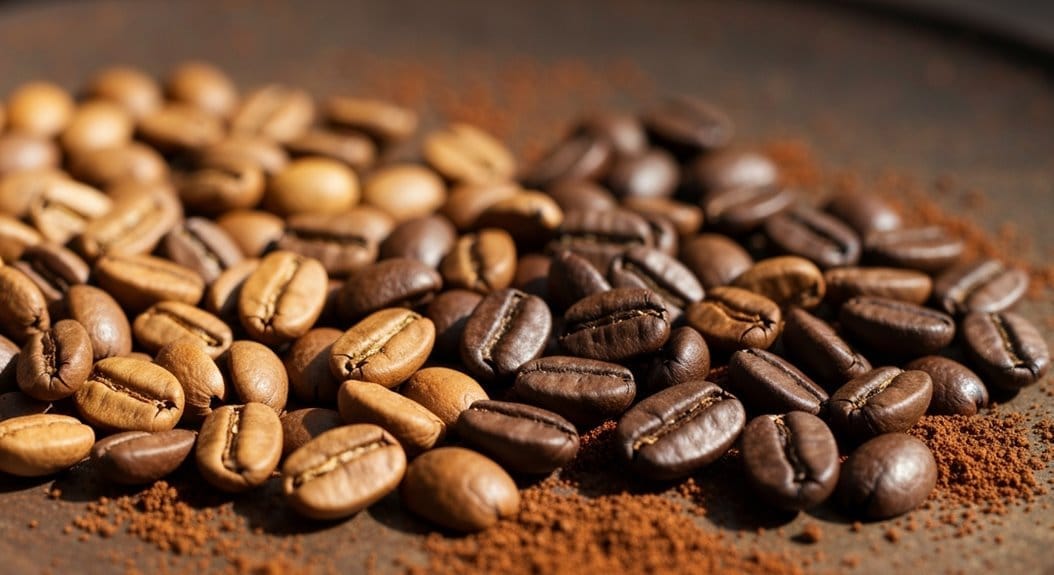
When you plunge into the world of coffee roast levels, it’s like stepping into a science experiment gone a little haywire—think mad scientist meets barista!
Diving into coffee roast levels feels like a mad scientist’s adventure with every sip revealing unexpected surprises!
Did you know that during that “first crack” moment, the magic begins? This is where those fabulous bioactive compounds, like phenolic content, start to show their stuff!
As beans roast and water activity dips, all sorts of roast chemistry happens. Now, don’t freak out if dark roasts seem to have less caffeine—it’s a rollercoaster ride of extraction yields!
And the antioxidants? They take a nosedive the darker you roast, thanks to thermal degradation.
Frequently Asked Questions
How Do Roast Levels Affect Caffeine Content in Coffee?
Roast levels minimally affect caffeine content; caffeine extraction remains stable during roasting. Roast intensity influences flavor rather than caffeine quantity, with negligible differences observed across light, medium, and dark roasts when compared by weight.
Can Different Brewing Methods Impact Roast Flavor Profiles?
Different brewing techniques greatly influence flavor extraction, highlighting distinct notes from coffee roasts. Light roasts thrive with methods showcasing brightness, while dark roasts excel with techniques enhancing boldness, each method tailored to optimize individual roast profiles.
What’s the Shelf Life of Different Roast Levels?
The shelf life varies by roast level, with light roasts lasting 4-6 weeks, medium roasts up to a year, and dark roasts best consumed within one month. Freshness indicators include aroma, flavor, and proper storage conditions.
Are Lighter Roasts Healthier Than Darker Roasts?
Light roasts typically offer higher antioxidant levels compared to dark roasts, benefiting metabolism and inflammation. However, dark roasts present unique digestive advantages. Consequently, healthiness varies depending on individual priorities and preferences between light and dark options.
How Can I Identify Roast Levels at Home?
To identify roast levels at home, one should observe tasting notes, smell roast aromas, check for surface oils, and listen for the initial and subsequent cracks, noting color changes indicative of each roast degree.
References
- https://sca.coffee/sca-news/25/issue-21/what-color-is-your-coffee
- https://pmc.ncbi.nlm.nih.gov/articles/PMC9311422/
- https://engineering.ucdavis.edu/news/new-research-shows-roasted-coffee-beans-follow-universal-color-curve
- https://www.nature.com/articles/s41598-025-06601-w
- https://library.sweetmarias.com/using-sight-to-determine-degree-of-roast/
- https://dailycoffeenews.com/2025/07/29/what-is-a-light-roast-researchers-outline-vision-for-a-universal-standard/

